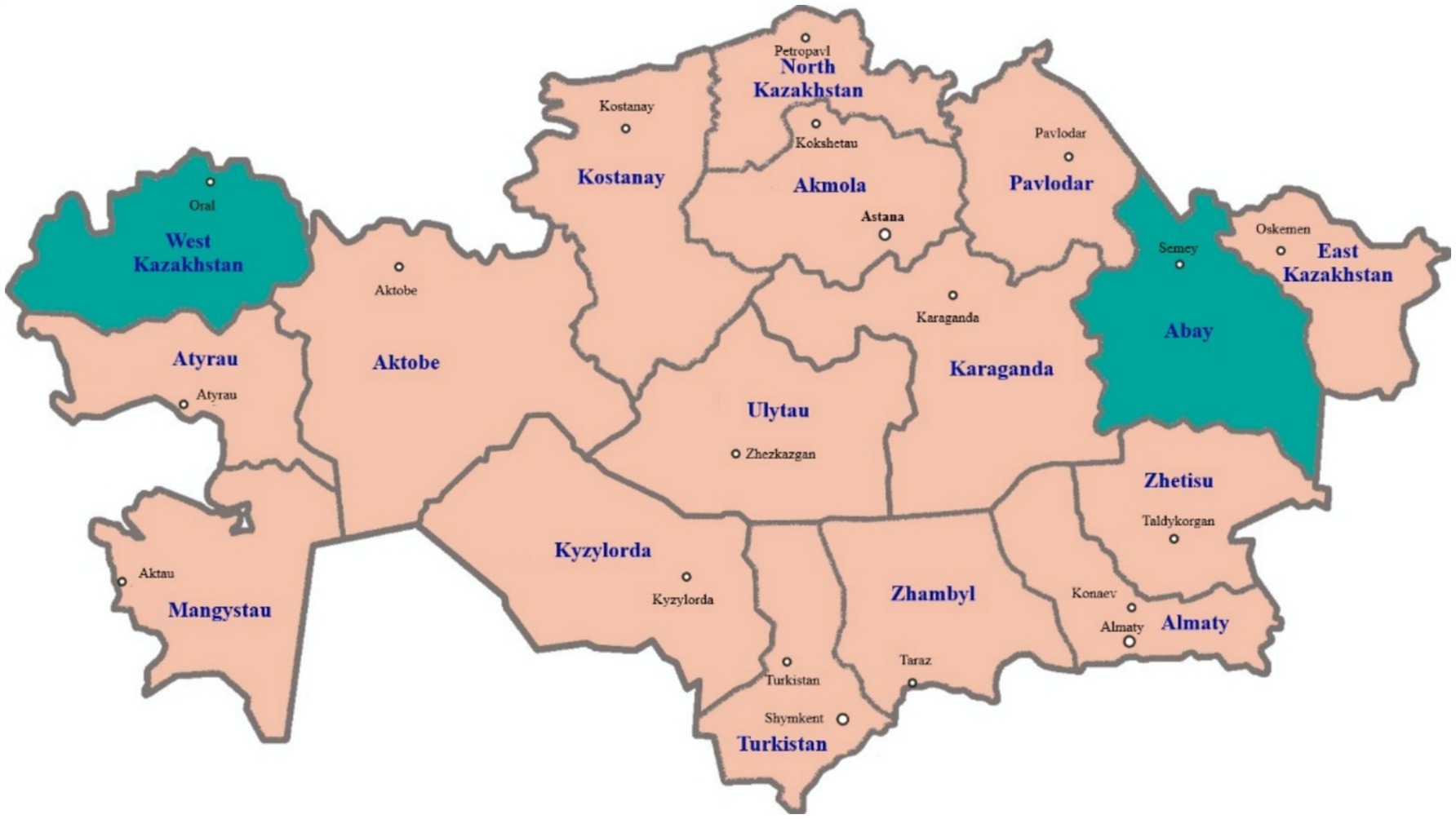Report on the Implementation of Inclusive Education in Kazakhstan in Alignment with Sustainable Development Goals
1.0 Introduction: Assessing Inclusive Education through the Lens of the SDGs
This report evaluates the system of conditions for implementing inclusive education within general education schools in the Republic of Kazakhstan, with a specific case study on the Karaganda region. The analysis is framed within the context of the United Nations Sustainable Development Goals (SDGs), particularly SDG 4 (Quality Education) and SDG 10 (Reduced Inequalities). While Kazakhstan has prioritized ensuring equal access to education for all children, including those with particular educational needs, significant challenges impede the full realization of these goals. The persistence of a medical model of disability and a lack of synergy between state and public initiatives represent critical barriers to creating truly inclusive learning environments as mandated by SDG Target 4.5 and Target 4.a.
2.0 Research Methodology
The evaluation employed a process approach to quality management systems, focusing on the effectiveness of the inclusive education process in meeting the diverse educational needs of every child. This methodology allows for the design and assessment of a comprehensive system with integrated feedback mechanisms. The research is based on:
- A review and content analysis of open-source documents from government departments and organizations that regulate general education schools in Kazakhstan.
- The collection and analysis of statistical reports from the Karaganda region Department of Education.
3.0 Analysis of Systemic Conditions for Inclusive Education
The study assessed a system of interdependent conditions necessary for the successful introduction of inclusive education. The effectiveness of this system is fundamental to achieving SDG 4 by ensuring inclusive and equitable quality education for all. The conditions evaluated include:
- Organizational and Educational Conditions
- Scientific and Methodological Support
- Staffing and Professional Development
- Regulatory and Legal Frameworks
- Financial Allocation
- Material and Technical Infrastructure
- Temporal and Scheduling Provisions
4.0 Key Findings: Barriers to Achieving SDG 4 and SDG 10
The investigation established that the existing system of special conditions for inclusive education is imperfect and its effectiveness is diminished by several critical shortcomings. These findings highlight significant challenges to the nation’s progress on its SDG commitments.
- Systemic Imperfection and Inefficiency: The measures implemented are characterized by insufficiency, asynchrony, and untimeliness. This fragmented approach directly undermines the goal of providing a consistent, high-quality inclusive education as outlined in SDG 4.
- Persistence of Outdated Models: An attempt to create a qualitatively new product (inclusive education) using outdated approaches from general secondary education poses a significant threat. The current process is a disjointed combination of general and special education, lacking the internal unity required for a truly inclusive system. This fails to address the core principles of SDG 10, which calls for reducing inequalities of outcome.
- Lack of an Integrated Inclusive Approach: The absence of a holistic inclusive approach across the entire general secondary education system is the primary obstacle. This not only hinders the development of inclusive education for children with special needs but also impedes the modernization of the education system as a whole.
- Failure to Leverage Partnerships: The report notes that state and public potentials are not combined. This points to a deficiency in multi-stakeholder collaboration, a key principle of SDG 17 (Partnerships for the Goals), which is essential for building robust and effective institutions.
5.0 Conclusion and Recommendations for SDG Alignment
The current state of inclusive education in Kazakhstan reflects a system in transition, one that has not yet achieved the systemic integration necessary to fulfill its objectives. The lack of a unified, inclusive approach across general education is a fundamental barrier to progress.
To accelerate the achievement of SDG 4 and SDG 10, it is recommended that policy and practice shift focus from merely providing “special conditions” to holistically meeting the “special educational needs of all children.” Such a paradigm shift would not only improve the quality of education for learners with disabilities but also serve as a catalyst for the modernization of the entire general secondary education system in Kazakhstan, ensuring a more equitable and effective learning environment for every student.
Analysis of Sustainable Development Goals in the Article
1. Relevant Sustainable Development Goals (SDGs)
-
SDG 4: Quality Education
- The article directly addresses this goal by focusing on “inclusive education” in Kazakhstan. Its core theme is ensuring “equal access to education for all children, taking into account their particular educational needs.” This aligns perfectly with SDG 4’s mission to ensure inclusive and equitable quality education for all. The text explicitly discusses the challenges in improving the “quality of education in Kazakhstan’s general education schools” through inclusion.
-
SDG 10: Reduced Inequalities
- By concentrating on the inclusion of “children who need special conditions” into mainstream schooling, the article tackles the issue of inequality. Providing equitable educational opportunities for children with disabilities is a fundamental step toward their social inclusion and reducing the inequalities they face. The article’s critique of the existing system highlights the barriers that prevent this group from participating on an equal basis with others.
2. Specific SDG Targets
-
Target 4.5: By 2030, eliminate gender disparities in education and ensure equal access to all levels of education and vocational training for the vulnerable, including persons with disabilities, indigenous peoples and children in vulnerable situations.
- This target is central to the article. The entire study revolves around creating a system for “inclusive education, which ensures equal access to education for all children,” with a specific priority given to “children who need special conditions.” The research evaluates the effectiveness of the current system in achieving this very goal.
-
Target 4.a: Build and upgrade education facilities that are child, disability and gender sensitive and provide safe, non-violent, inclusive and effective learning environments for all.
- The article implicitly addresses this target by discussing the necessary “system of conditions” for successful inclusion. This system includes “material and technical” conditions, which directly relates to upgrading facilities to be suitable for children with diverse needs and creating an “inclusive and effective learning environment.” The finding that the current system is “imperfect” points to a deficit in meeting this target.
-
Target 10.2: By 2030, empower and promote the social, economic and political inclusion of all, irrespective of age, sex, disability, race, ethnicity, origin, religion or economic or other status.
- Inclusive education is a primary driver of social inclusion. The article’s argument against the “medical model” and for a truly “inclusive approach” is an argument for the social inclusion of children with disabilities from a young age, which is the core aim of Target 10.2.
3. Mentioned or Implied Indicators
-
Existence and effectiveness of a support system for inclusive education.
- The article explicitly evaluates a “system of conditions” that includes “organizational and educational, scientific and methodological, staffing, regulatory and legal, financial, material and technical” aspects. The assessment of this system’s completeness and effectiveness (finding it “imperfect; insufficiency, asynchrony, and untimely adoption of certain measures”) serves as a direct indicator of progress.
-
Analysis of statistical data on student inclusion.
- The research methodology mentions the “collection and analysis of data from statistical reports of the Karaganda region Department of Education.” This implies the use of quantitative data, such as the proportion of children with special needs enrolled in general education schools, to measure the extent of inclusion, which aligns with official SDG indicators like 4.5.1.
-
Shift in educational models from segregation to inclusion.
- The article points to a key qualitative indicator by noting that the “medical model continues to dominate” and the current process is a “combination of general and special education processes” lacking “internal unity.” Progress could be measured by the degree to which educational policy and practice shift away from this model toward a genuinely “inclusive approach to general secondary education.”
Summary Table of SDGs, Targets, and Indicators
| SDGs | Targets | Indicators (Implied or Mentioned in the Article) |
|---|---|---|
| SDG 4: Quality Education | Target 4.5: Ensure equal access to all levels of education for the vulnerable, including persons with disabilities. | Analysis of statistical reports from the Department of Education to track the enrollment of children with special needs in general schools. |
| SDG 4: Quality Education | Target 4.a: Build and upgrade education facilities to be disability-sensitive and provide inclusive learning environments. | Evaluation of the “system of conditions,” including the adequacy of “material and technical” support for inclusive education. |
| SDG 10: Reduced Inequalities | Target 10.2: Empower and promote the social inclusion of all, irrespective of disability. | The degree of shift from a segregated “medical model” to a fully integrated “inclusive approach” in the national education system. |
Source: frontiersin.org







